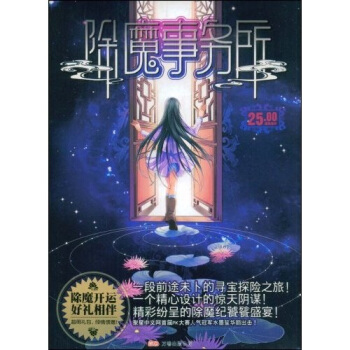 PDF下载
公众号
其他格式
PDF下载
公众号
其他格式
大小:- MB
下载:19次
【瑕疵书】培养双语儿童 英文原版 Raising a Bilingual Child双语家庭教育解密
进口原版 Parenting & Families(养育与家庭)
- ISBN:9781400023349
- 开本:32开
- 版次:1
- 页数:以实物为准
- 出版社:Living Language
- 出版时间:2008-01-01
- 作者:
手机扫码免费下载
纠错留言#电子书截图
#电子书简介
此图书为瑕疵品,现做低价清仓处理。其他买家退换货回来导致“图书损坏、污渍...等”,但内容不影响阅读。
图书一旦售出,一概不退不换,介意者慎拍!!
本店所有图书都是正版书,请放心购买!!!
书名:Raising a Bilingual Child 培养双语儿童
作者:Barbara Zurer Pearson
出版社名称:Living Language
出版时间:2008
语种:英文
ISBN:9781400023349
商品尺寸:13.9 x 1.8 x 20.9 cm
包装:平装
页数:368(以实物为准)
★荣获美国I Parenting Media Award年度图书奖
★美国儿童语言研究专家送给全世界双语家庭的科学养育宝典
儿童是如何学习语言的?促进儿童语言发展有哪些诀窍?儿童的大脑何时容易接受新的语言?双语儿童有哪些优势?培养双语儿童的好时机是什么时候?培养双语儿童有哪些常用策略?如何确保孩子的两种语言均衡发展?双语会让孩子感到困惑吗?——如果你希望孩子学会两种语言,你是否知道这些问题的答案?
Raising a Bilingual Child《培养双语儿童》作者巴巴拉·祖瑞尔·皮尔逊教授将用她对双语儿童语言发展的毕生研究,告诉广大家长和儿童教育工作者关于双语儿童的秘密!
媒体评论:
“阅读此书将改变你对培养双语儿童的看法。它的字里行间闪烁着真知与灼见,放射着温暖与智慧的光芒。皮尔逊教授了解为人父母的所思所想,书中的见解令人,在父母为什么要培育双语儿童以及怎样培育双语儿童方面的论据也令人信服。”——叶彩燕教授(Professor Virginia Yip),儿童双语研究中心总监,香港中文大学
“这本书以清晰易读的文体,结合作者亲身实践经验和研究的成果,为当今的父母帮助孩子学习第二语言,促进双语发展,提供丰富而宝贵的信息及建议。所有希望自己的孩子能在新的化环境下健康成长,并具有竞争力的父母和幼儿教育工作者都应当人手一册,认真阅读,领会并实践。”——李嵬,英国伦敦大学学院应用语言学讲席教授、《双语学报》主编
If you would like your children to experience the benefits of becoming bilingual, but you aren’t sure how to teach them a second language, then Raising a Bilingual Child is the perfect step-by-step guide for you.
Raising a Bilingual Child provides parents with information, encouragement, and practical advice for creating a positive bilingual environment. It offers both an overview of why parents should raise their children to speak more than one language and detailed steps parents can take to integrate two languages into their child’s daily routine.
Raising a Bilingual Child also includes inspirational first-hand accounts from parents. It dispels the myth that bilingualism may hinder a child’s academic performance and explains that learning languages at a young age can actually enhance a child’s overall intellectual development.
Review
“A timely and well-written book!… [It] helps parents prepare their children for the future…”--J. Kevin Nugent, Ph.D.
“This is a book that inspires confidence that the choice of bilingualism is a good one for parents, for children, and for our society.”--Donna Christian, Ph.D.
“Pearson has used her keen insights about the issues that parents are concerned about to paint an in-depth and interesting-to-read handbook.”--Fred Genesee, Ph.D.
“I enjoyed reading Raising a Bilingual Child and found it informative and accessible.”--Chris Rosenberg
Raising a Bilingual Child《培养双语儿童》分为八个篇章,科学阐释了儿童的第1语言和第二语言的发展,双语儿童的类型、优势、培养策略、教养实例、身份认同等问题,并在书后提供了多年来围绕双语儿童的十二个迷思的科学解答。
巴巴拉·祖瑞尔·皮尔逊,美国马萨诸塞大学兼职教授、副研究员,双语教育研究专家。从事双语与语言学研究长达二十余年,在婴幼儿双语学习与语言方面有突出成就。已发表同行评议文章四十余篇,出版著作有《双语儿童的语言与读写》(Language and Literacy in Bilingual Children)、《培养双语儿童》(Raising a Bilingual Child)等。
Barbara Zurer Pearson,Ph.D., is a Research Associate in Linguistics and an Adjunct Professor in the Department of Communication Disorders at the University of Massachusetts Amherst. Her Ph.D. in Applied Linguistics is from the University of Miami. She has over twenty years of research experience in the fields of language acquisition and bilingualism and did ground-breaking work on bilingual acquisition and assessment with her research group at the University of Miami. Those studies of bilingual infants and children have been published in the book Language and Literacy in Bilingual Children. Most recently, Barbara Zurer Pearson worked on the Diagnostic Evaluation of Language Variation (DELV), a project to develop an innovative language assessment for children funded by the National Institutes of Health.
The key to raising bilingual children is for parents (or less often, the school) to establish the minority language. The language of the broader community–the language of school, commerce, government, and the mass media–is a given. In every culture, all healthy children learn the majority language, even when their parents do not. But families must make a
special effort to “grow” both a majority language and another one. The minority language may be a heritage language that parents or grandparents have brought from another country, or it could be another language chosen by the parents for any of a variety of reasons. For example, it might be a second official language that children are expected to learn, as in Canada, Switzerland, or Hong Kong. Sometimes speakers of a country’s majority language opt to educate their children in a
language that they believe will have strategic importance later in the child’s life, such as Spanish in the United States. Or it could be that the individual seeks to communicate in another modality, as with a spoken and a signed language.
For any given person being raised in a bilingual situation, we cannot know whether she will become actively bilingual or not. But we can be aware of trends. We can compare groups who are bilingual to others who seem to have the potential for bilingualism, but did not pursue it or did not achieve it. With my colleagues in the University of Miami Bilingualism Study Group, I explored the practices and ideas bilingual groups have in common. From these studies, I pinpoint the key ingredients in their experiences for fostering the second language. At the end of this chapter, I explore ways to take advantage of this knowledge in your families. Then, in chapter 5, you will hear from parents who have used these principles, and together we will evaluate how their strategies worked for them and how they might work for you.
I emphasize ways to strengthen the minority language because that is the more difficult case. However, the same principles are effective for a child who is learning a new community language, such as an expatriate or a recent immigrant. Parents wishing to encourage or reinforce the use of the community, or majority, language can also employ these strategies.
As you read this chapter, I’d like you to consider where your child will hear and use her languages and what other resources are available to give the child’s languages a broader context than just your nuclear family.
^_^:0f3be043bf330c30d852b2854acf74e1
^_^:dbc70c84fe2dcad35c350af6557b37cb
^_^:fdca5fff6a679f9e8af04a10da263c65









评论列表(0)